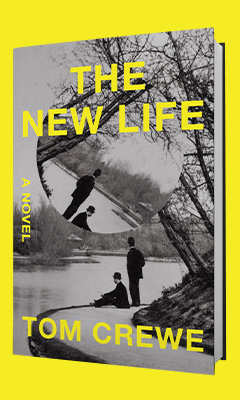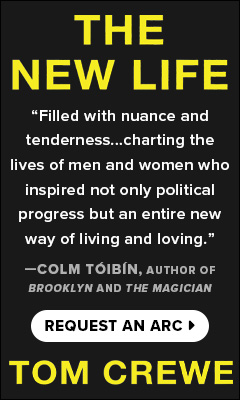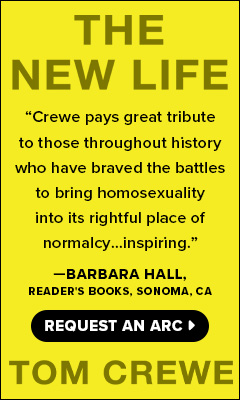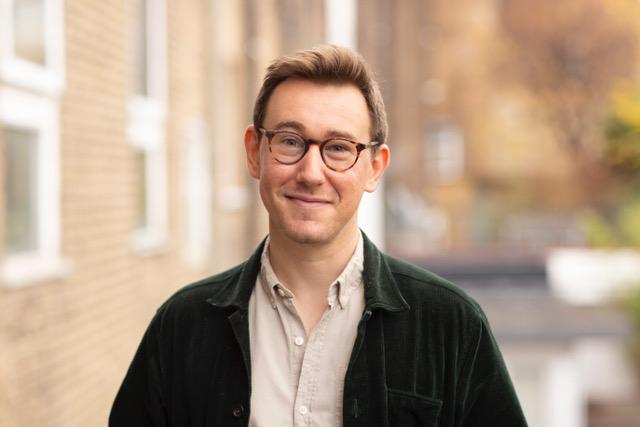The New Life
by Tom Crewe
Intense and character-driven, Tom Crewe's debut historical novel, The New Life, takes on issues of sexuality, freedom and the universal longing for human connection, framed through the lens of late 19th-century sex scholarship and domestic life. The Society of the New Life is named for a philosophical circle and for the protagonists' desire to step into a better tomorrow. The story follows two men (inspired by actual historical figures), Henry Ellis and John Addington, both intellectuals and writers with an interest in human sexuality. They begin corresponding when John reads a piece Henry wrote about the "Greek feeling" and soon begin to collaborate on a book about "inversion"--sexual activity and inclination outside what is considered "normal." Homosexuality in late 1890s England is illegal, and they run a great risk if they seek to publish the book, a conflict Crewe skillfully builds parallel to the sense of freedom the work gives both men.
After decades of toxic repression, middle-aged John needs to escape his closeted life for his physical and mental well-being. In one of his first scenes, John ogles from a distance a group of men at their morning bathing spot at the river. When one of the young men, Frank, approaches him, John is all too eager to cheat on his wife, soon entering a relationship with Frank and even bringing him into the family home as his "personal secretary."
Crewe's nuanced characterization is most evident within the two men's marriages. Catherine and John have been married for two decades at this point and while "it was on doctor's orders that he had married her," Catherine expected a true marriage when she accepted his proposal. As John takes more and more risks to live out his desires, Catherine confronts him in one of the most emotionally incisive scenes in the book. She forces him to consider how he used her body and her position as a married woman in society to act as a shield and a desperate grasp at self-control.
"'We had our two girls. Then you tell me how my parts--it is not my fault--disgust you.... I must realize that you will never want me. We agree that everything of that sort is over between us. Three years pass.... And then, one night, without warning, you are on top of me.... You do not speak. You do not look at me.... I am merely a pit dug for you to empty yourself in. I am merely flesh, fitted to receive your waste.'"
Yet even as Catherine forces John to acknowledge everything he took from her--including her bodily autonomy--and readers to acknowledge John's selfishness, it's still easy to empathize with him. The lives of these characters are shaped as much by their personal wants as by the demands of Victorian society, and the hurts they inflict on themselves and each other might not exist at all if "inversion" wasn't socially and legally repressed.
Crewe introduces the young doctor Henry Ellis as he's dressing to marry fellow progressive thinker Edith, a friend from the Society of the New Life who is as passionate about social issues as he is. They marry in what they consider an honest, modern arrangement, "taking on the usual forms only to show how they might be stretched to fit new purposes." They will live apart, joining for the pleasure of each other's company and public occasions that require it. They are friends and intellectual equals first, with the physical aspects of their relationship a secondary consideration.
The trial of Oscar Wilde looms large in the latter half of the book and while Crewe's PhD in 19th-century British history and his research for this book in particular are evident, he doesn't bog down the story in exposition. Instead, he focuses on the humans behind the headlines and the strain John and Henry's work places on their most important relationships. While The New Life focuses largely on the late 19th-century gay rights movement, Crewe takes care with the parallel fight for women's rights and the experiences of queer women and of "inverts" from all walks of life.
Crewe dredges up all the hurt, desperation, lust and shame his characters might feel, yet he also challenges the misconception that all queer people--and especially gay men--were miserable at the time. Though they certainly face difficulties, many of the queer characters make space for their relationships, to build something joyful and fulfilling. John's passions often take the fore, but Henry's more reserved countenance and philosophy on the complexity of human nature form a counterbalance that invites readers to examine their own identity and relationships. After all, more than a century after the ill-timed publication of Henry and John's Sexual Inversion, people are still looking for the way to step into that new life, one in which everyone can live and love openly. --Suzanne Krohn








